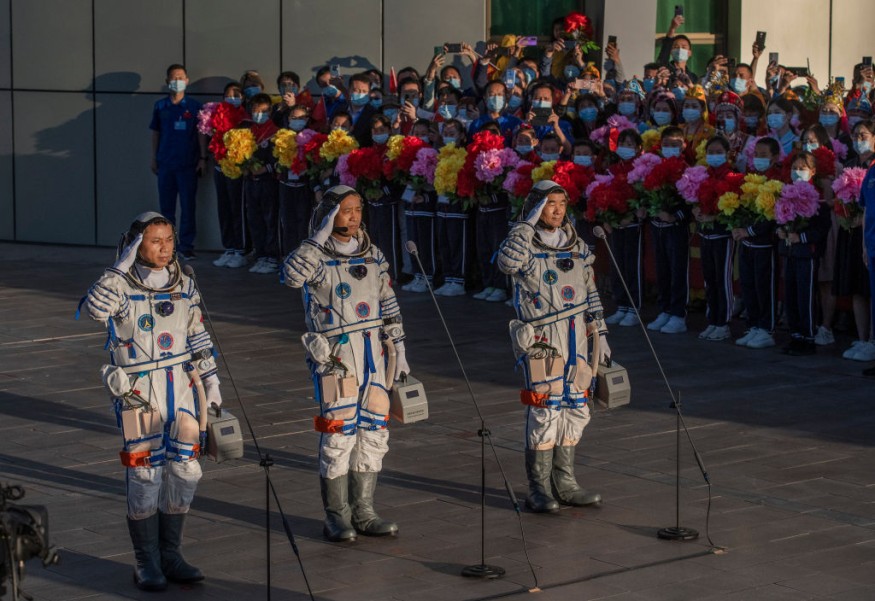Three taikonauts from the Shenzhou-14 manned spaceflight mission have safely returned to the Dongfeng landing site in the Gobi Desert, North China's Inner Mongolia Autonomous Region, following a successful six-month stay at the China Space Station and the first-ever direct handover in orbit in the nation's aerospace history.
The return capsule of the Shenzhou-14 human spacecraft carrying three taikonauts successfully touched down at the Dongfeng landing site at 8:09 on Sunday night.
The China Manned Space Agency (CMSA) told Global Times that the taikonauts' good health was certified by medical staff, indicating that the return mission was a perfect success, as reported by the Global Times on Sunday.

Shenzhou-14 Chinese Astronauts Arrived on Earth After Successful Mission
China's space agency said the mission was a "complete success."
In an audio broadcast by official broadcaster CCTV (per BBC News), commander Chen Dong and crewmates Liu Yang and Cai Xuzhe claimed they felt well after landing.
The crew was removed from the escape capsule by workers at the landing site soon after 8 pm local time, or roughly nine hours after docking with the space station.
BBC News, citing state-run Xinhua news agency, said that Ms. Yang, the country's first female astronaut, had an incredible experience in space and was "excited to return to the ."
The three astronauts performed three spacewalks to inspect and test the new facilities while they were in space, where they also observed the arrival of the second and third modules for Tiangong.
Following the initial launch of the Tianhe core module in April 2021, Shenzhou 14 was the third crewed mission to Tiangong. Shenzhou 12, the first crewed mission to Tianhe, departed in June 2021 and touched down 92 days later.
The recently launched Shenzhou 15 mission, fueled by the Tianzhou 5 ship, will likewise last for around six months. The Jiuquan Satellite Launch Center already has the spacecraft for the next flight. According to China's official space news site, Shenzhou 16 has been constructed, tested, and is ready to launch to Tiangong in an emergency.
Space.com said Shenzhou 15 and Tianzhou 5 are currently docked at the finished Tiangong station, which is nearly 20% larger than the International Space Station (ISS).
In the upcoming years, there may be commercial missions, foreign astronauts, and even tourist trips to the orbiting outpost, which the government intends to maintain continuously inhabited and operating for at least ten years.
How Shenzhou-14 Arrived
Bian Hancheng, the deputy chief designer of the manned space project landing site system, told the Global Times that the search and rescue operation for the Shenzhou-14 return capsule is crucial to improving China's reputation abroad because it signals the completion of the China Space Station's construction phase.
According to Bian, who is also a senior engineer at the Jiuquan Satellite Launch Center in Northwest China's Gansu Province, China has signed agreements with more than a dozen nations and regions to carry out space experiment projects on the China Space Station, and this is the first time that a space application system has taken part in the search and rescue operations at Dongfeng. According to him, the assignment has created a new standard for the landing site's ability to retrieve space application payloads from domestic and international clients.
According to the Dongfeng landing site officials, the largest difficulties the search and rescue effort would face are the severe cold and nighttime temperatures, which might result in the most intricate and challenging scenarios.
RELATED ARTICLE: China Space Station's Shenzhou-14 Astronauts Complete Second Extravehicular Activities
Check out more news and information on Space in Science Times.










